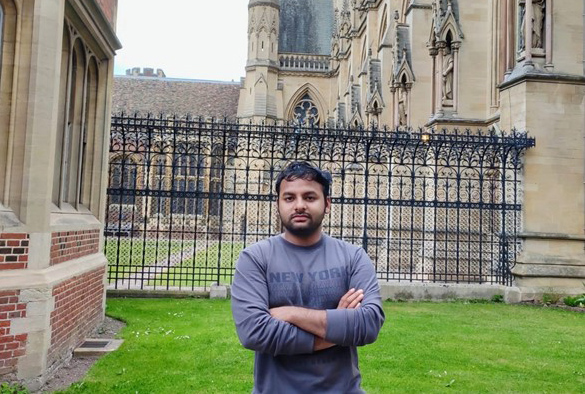Gyanendra Yadav’s industrial placements with Tethir and Microsoft

QUASAR Group member and LIV.DAT student Gyanendra Yadav carries out research on laser-driven electron acceleration through dielectric grating structures. The research work involves doing electromagnetic and particle-in-cell simulations for optimizing the grating structures and analyzing the dynamics of charged particles.
At the start of this year Gyanendra was given the opportunity to undertake industrial placements. Gyanendra split his placement between two companies.
The first placement was with tethir. in the field of free space optical communication. The work required addressing challenges in high-speed data transmission through free space. Gyanendra prepared an optical link and power budget for this research and characterized the angular acceptance of several photodiodes for a fibre coupled Infrared laser. The prospective applications of the work include increasing the internet speed on high-speed trains in the UK.
During the second placement, Gyanendra worked as a research intern at Microsoft Research in Cambridge. The tremendous surge in the amount of data generated globally requires revolutionary methods for long-term storage. Project silica at Microsoft is designing a completely new optical data storage system to meet this requirement. Gyanendra’s project was aimed at increasing optical data writing speed, which involved working with ultrafast lasers and electro-optical devices to serve this purpose.
Gyanendra commented: “The experience with both the placements was intriguing. With tethir, being a start-up company, I was working directly with the CTO. I received ample guidance and exposure to a relatively new field of free-space optical communication. I also got an opportunity to understand the development of a scientific idea and its materialisation into entrepreneurship. At Microsoft, I was part of the Project Silica team and got a chance to work collaboratively with people across the disciplines of optics, electronics, and machine learning. The project involved both simulations and experimental design with pulse lasers. Apart from gaining experience working in the state of art laboratories, I witnessed the significance of collaboration and teamwork in achieving a scientific goal. “